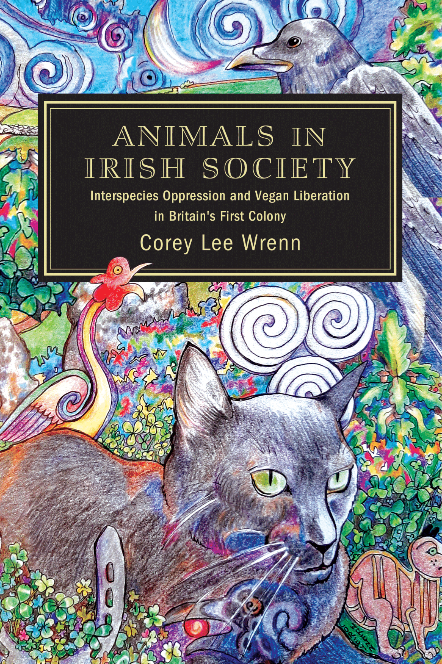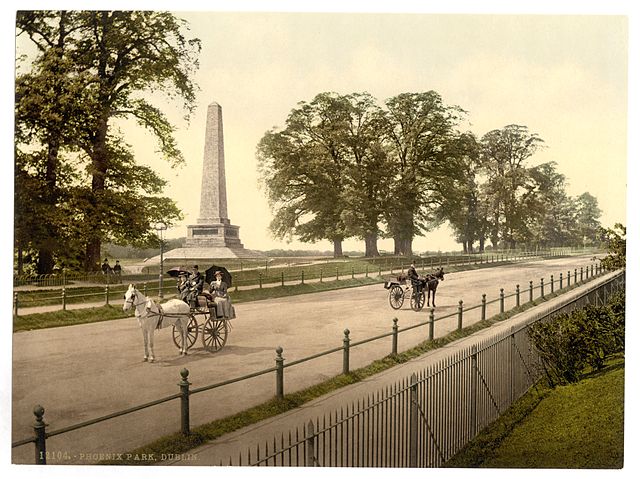Juliana Adelman’s Civilised by Beasts presents a case study on urbanization in the modernizing West with an examination of human/nonhuman relations in the Irish city of Dublin. As Dublin contended with changing economies, a rising population, and numerous public health concerns in the 19th century, city planners and officials responded by increasing the control and compartmentalization of nonhuman animals. Dogs, pigs, horses, and cows or bulls are spotlighted as workers, commodities, and contagions who are gradually removed from urban spaces. Adelman initiates her investigation with an overview of early humane advocacy in Dublin, a history that is generally erased in more prominent narratives of the United States and United Kingdom. The lack of attention to Irish anti-speciesism is a curious one given that the first animal rights laws in the West can be credited to Irish politicians and activists (Wrenn, 2021). Adelman’s scrupulous attention to Irish policies, Dublin City records, and other historical documents is extremely useful in this regard.
However, Adelman offers limited space to documenting advocacy work. She is primarily concerned with 19th century class distinction as it is reified through speciesist production and consumption practices. This transpired superficially through the conspicuous consumption of expensive horses and carriages and the preferential treatment for middle-class “purebred” dogs. It appeared in more sinister ways, too, as was apparent in the conflation of “dirty” pigs with “dirty” working class and slum-dwelling Dubliners, both of whom were subject to police harassment and oppressive city clean-up efforts. Adelman considers how the control of other animals might be used to facilitate public order not just physically, but also ideologically. “Kindness to animals became a mark of civilization,” she notes (p. 26). To this end, she discusses the introduction of the Dublin Zoo as a means to educate the public about other animals. A more conscientious public was seen as more civilized, docile, and in line with romanticized ideations of ideal urban living. At the very least, zoos could distract from stark social distinctions of city life by emphasizing the shared humanity of visitors. This argument has been documented in the previous work of Janet Davis (2016) in the United States and Richard Ryder (1989) in the United Kingdom.
Although Adelman insists that thinking about nonhuman animals helps define what it means to be human, Civilised by Beasts persistently objectifies nonhuman animals. Objectifying language (“cattle,” “meat,” “livestock,” etc.) is employed regularly and without criticism. Adelman notes that she “tried to be sensitive, where sources allow, to animal lives and experiences” (p. 8), but it is primarily only companion animals who are treated as sentient beings whose suffering warrants critical attention. The plight of cows, pigs, and horses is far more objectively reported. Horrific slaughter practices that undoubtedly entailed considerable terror and pain for bovine victims, for instance, are described clinically as though they were banal events. Other animals (such as chickens, sheep, goats, fishes, and other species horribly oppressed in the 19th century city) go almost without mention. Of course, Adelman would have been pressed for space, but the special attention given to some species over others does somewhat undermine the book’s effort to reintegrate nonhuman animals into the history of the city.
Much could be unpacked in the colonial sense as well. Irish subjects were notoriously animalized by the British media and government in such a way as to naturalize their oppression and call into question their ability to rule themselves. The civilizing project, therefore, was not simply a matter of improving public health and managing poverty. It was also an extension of colonial control whereby marginalized humans and other animals were simultaneously targeted, exploited, and manipulated for the benefit of the British Empire (Wrenn, 2021). Adelman’s primary interest in colonialism lies in the changing power dynamics between Catholics and Protestants as relevant to city governance and parliamentary policy. There are tantalizing hints at the structural influence of colonialism on animalization, however, such as the changing attention to animal-based foods, animal “husbandry,” and public cleanliness that transpired in the wake of the Great Famine (Adelman, 2020, pp. 77–83). The work of sociologist David Nibert (2013) would be especially enlightening on this point. Nibert has emphasized that the experiences of marginalized humans are intimately entangled with those of other animals and this entanglement is rooted in capitalist economic systems.
Civilised by Beasts offers an important glimpse into an under-researched region in animal studies and contributes to an emerging literature on Irish anti-speciesism. However, it reads as though keyed to the fields of urban studies and public health. This may disappoint Critical Animal Studies scholars given its overall reluctance to problematize systemic violence against other animals and the colonial system more broadly.
References
Davis, J. (2016). The gospel of kindness: Animal welfare and the making of modern America. Oxford University Press. Nibert, D. (2013). Animal oppression and human violence: Domesecration, capitalism and global conflict. Columbia University Press.
Ryder, R. (1989). Animal revolution: Changing attitudes towards speciesism. Blackwell Publishers.
Wrenn, C. (2021). Animals in Irish society: Interspecies oppression and vegan liberation in Britain’s first colony. SUNY Press.

Readers can learn more about Irish vegan studies in my 2021 publication, Animals in Irish Society: Interspecies Oppression and Vegan Liberation in Britain’s First Colony.
Receive research updates straight to your inbox by subscribing to my newsletter.
